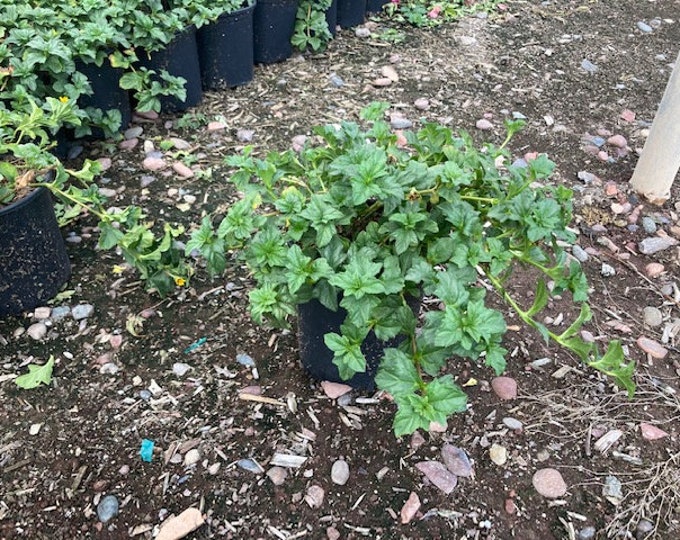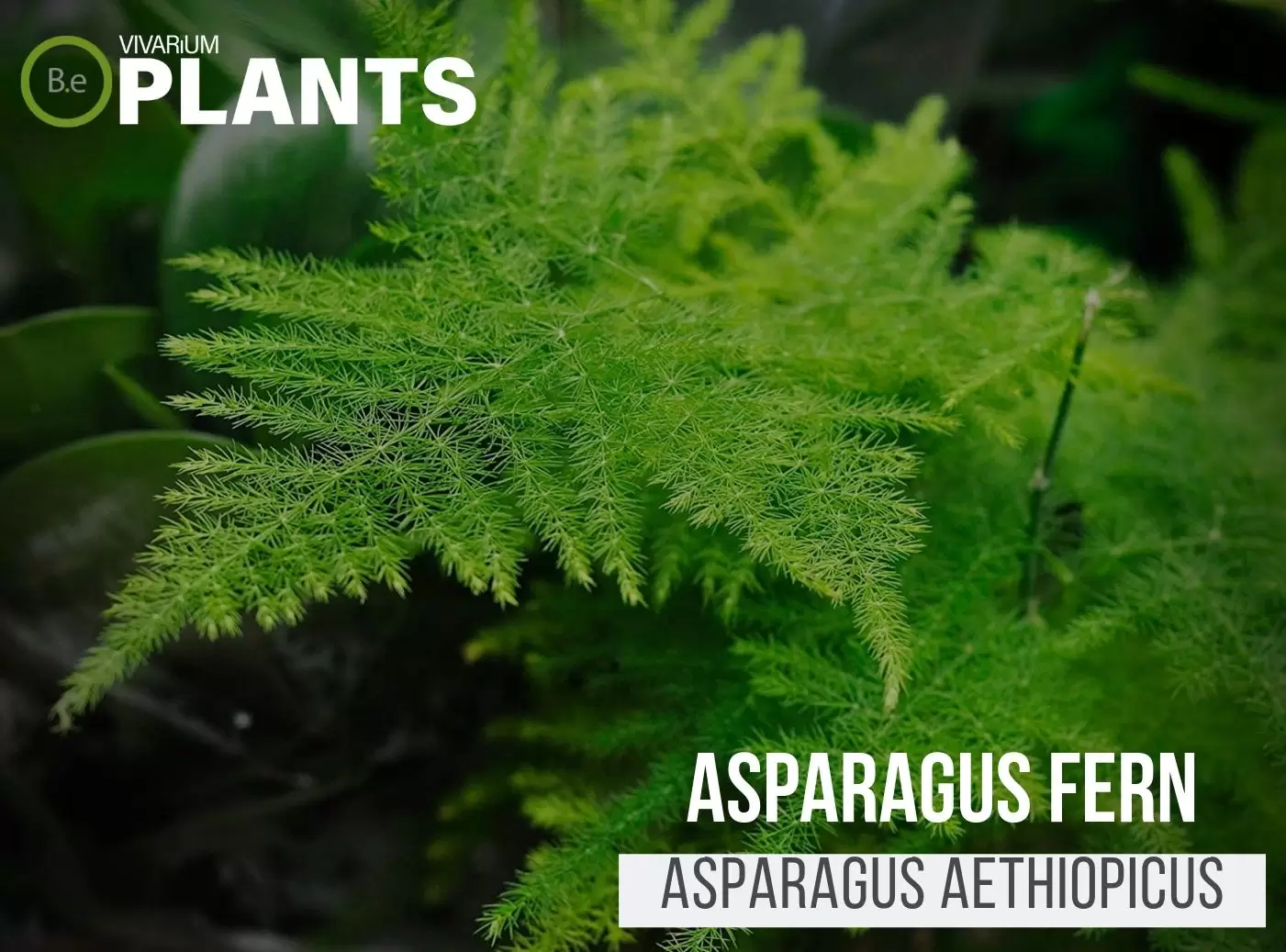Sphagneticola trilobata is a vining plant admired for its bright, cheerful foliage and the beautiful yellow flowers it blooms during the summertime.
Although it is safe for pets, it does require a bit of upkeep.
This trailing daisy grows best in full to part sun and is a great-looking trailing option for beginner hobbyists.
| Quick Stats: | |
|---|---|
| Scientific Name | Sphagneticola trilobata |
| Common Name | Trailing Daisy, Bay Biscayne, Creeping Oxeye, Singapore Daisy, Wedelia Trilobata |
| Family Name | Asteraceae |
| Habitat | Sun-Drenched Meadow |
| Temperature | 65°F to 75°F |
| Height | 10 to 12 inches |
| pH | 6.0 to 7.0 |
| Lighting | Bright |
Table Of Contents:
ToggleWhat Is A Trailing Daisy
Sphagneticola trilobata is a flowering plant native to South America and parts of the Caribbean but is considered invasive in some parts of the world.
It prefers sun-drenched meadow-like habitats and makes a great addition to any vivarium due to its low maintenance characteristics.


Trailing Daisy Facts
This plant has simple, green leaves with striking yellow daisy-like flowers that bloom during summer.
It requires frequent trimming as it can easily become overrun and take over a tank.
It’s a great provider of cover for small inverts and creates a natural soil-level look for any enclosure.
Description
Wedelia is a low-growing, evergreen plant with three-lobed leaves and very small yellow flowers.
Its leaves are arranged in a pattern in threes and its stems form a plant that appears to creep and spread over an area.
The stems can reach up to 10 to 12 inches long and have a fairly dense growth habit.
Habitat
Trailing Daisy is native to South America and parts of the Caribbean.
It enjoys soil-level habitats with plenty of sunlight and moderate moisture content.
pH Preference
Sphagneticola trilobata prefers slightly acidic to neutral soil pH, ranging from 6.0 – 7.0.
If the levels become too low, the foliage will become discolored and the plant will not thrive.
Vivarium Type
The Trailing Daisy is quite an easy-going species. With that in mind, it will not be too complicated when it comes to the type of enclosure it is grown in.
The best piece of advice that can be given, is to try and replicate the plant’s natural habitat as much as possible.
Doing so will make it easier to provide the vine with the basic needs it will require to thrive.
The proper setup and theme of the enclosure will make a big difference to the overall look and health of the plant.
Be sure to go with setups that are moist and high in humidity. Here are recommended vivariums it will do well in:
- Paludariums – Half aquatic/ half terrain-based enclosure.
- Terrariums – Fully terrain-based enclosures with little to no aquatic features.
Vivarium Placement
Sphagneticola trilobata is a trailing plant, so placing it on a soil level and/or within a frame for it to spread over is the best solution for this plant.
Adding pieces of branches or a pile of rocks in the vivarium helps with trimming and climbing for small, inverted inhabitants.
Substrate
Trailing Daisy is best grown in a loose and well-draining substrate.
A mix of terrarium soil or soil-based orchid bark is a great option.
Lighting
Wedelia appreciates plenty of bright, indirect sunlight and direct sunlight during part of the day.
Try avoiding more harsh lighting in direct sun for long periods of time, as it will stress the plant and cause burning.
A better alternative would be to set up your own terrarium lighting.
Buy Trailing Daisy
When it comes to buying a Trailing Daisy, there are a few things to keep in mind.
Making sure that the plant being bought is healthy is essential for its success in a vivarium.
Vegetation that is already in poor conditions, will have a very hard time adjusting to new environments.
Always make sure to buy from a reliable and honest establishment.
Whether it is an online store or a physical location should not matter.
However, online stores might need to be researched a little bit harder to make sure that they are legitimate and are sending the correct plants.
In addition, always check the foliage closely for yellowing, wilting, black spots, or any signs of damage.
Pay close attention and look for any pests or fungal diseases. Inspect both sides of the leaves to avoid missing any red flags.
Click the image below to find out more about the current price and other relative info about this plant:
Trailing Daisy Care and Propagation
Sphagneticola trilobata is a fast-growing plant and will need occasional trimming to help it keep its shape.
The best propagation method for this plant is to take cuttings and replant them in the tank.
Cuttings should be between 4-5 inches and the tip should be buried in the substrate to promote rooting.
How to grow
Trailing daisy is best grown when planted in a loose and well-draining substrate.
The soil should be kept moist, but not saturated with water.
The plant will also benefit from misting or from drip irrigation if available.
Watering
Sphagneticola trilobata should be watered regularly and its soil should remain damp at all times to ensure the health of this plant.
In hotter climates and tanks with more light, the plant may need to be watered more often to prevent it from drying out.
Plants Similar To Trailing Daisy
Adding diversity to an enclosure is key to an aesthetically pleasing setup.
Try mixing up the look of your vivarium with different flora that can easily co-exist in the same environment.
Furthermore, if for some reason you find trailing daisy hard to acquire or would like to consider something similar to this plant…
Here are some other vine plants you might find may do well with or in the place of Wedelia:
Conclusion
Sphagneticola trilobata, or Trailing Daisy, makes a great addition to any vivarium due to its beautiful yellow flowers and lush foliage.
It is an easy-to-care-for plant and perfect for beginner hobbyists.
This terrarium plant will bring natural shelter and a unique look to any tank but will require frequent trimming to prevent it from taking over.
With proper maintenance, you are sure to reap the rewards of owning a Wedelia!




